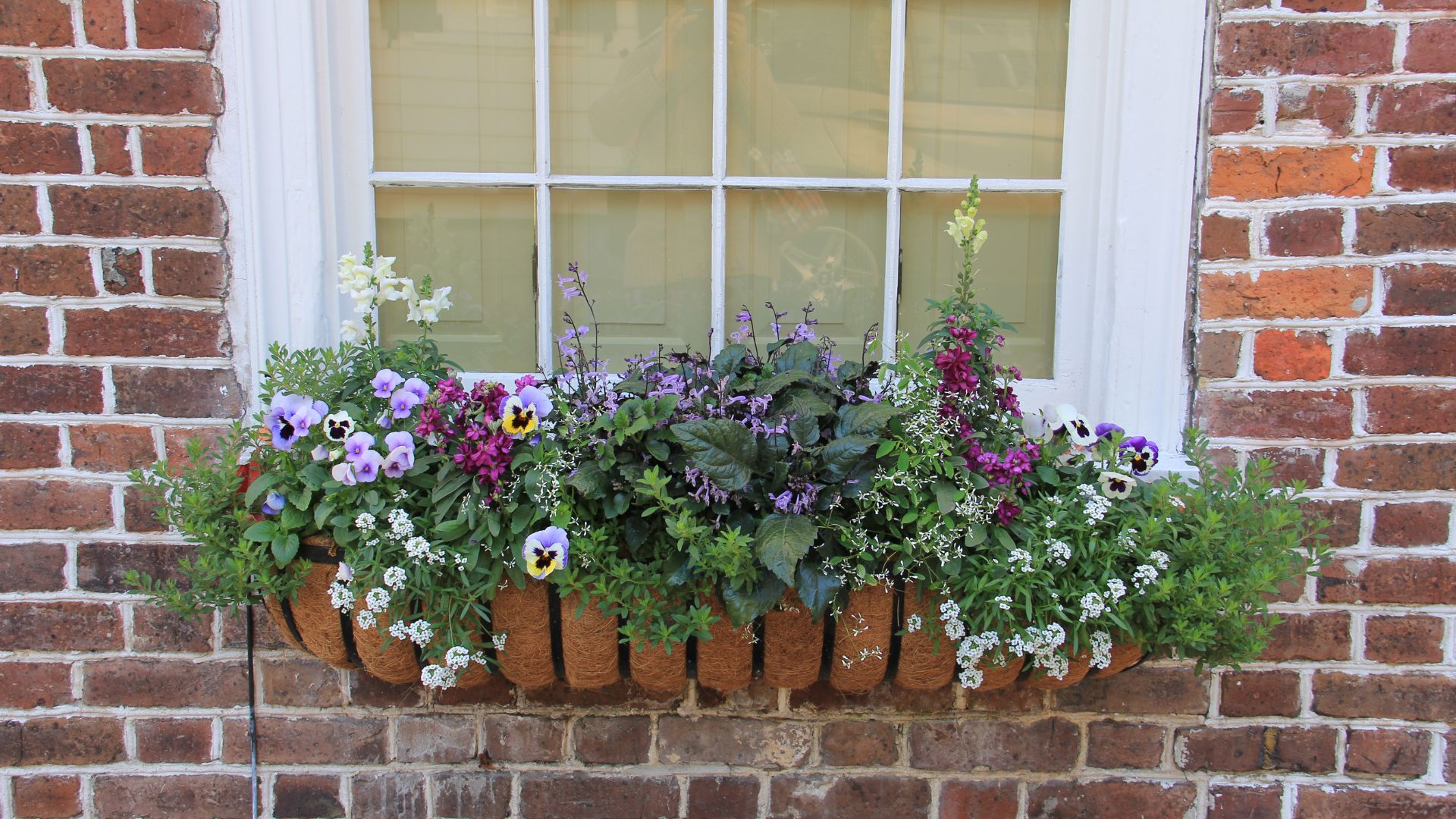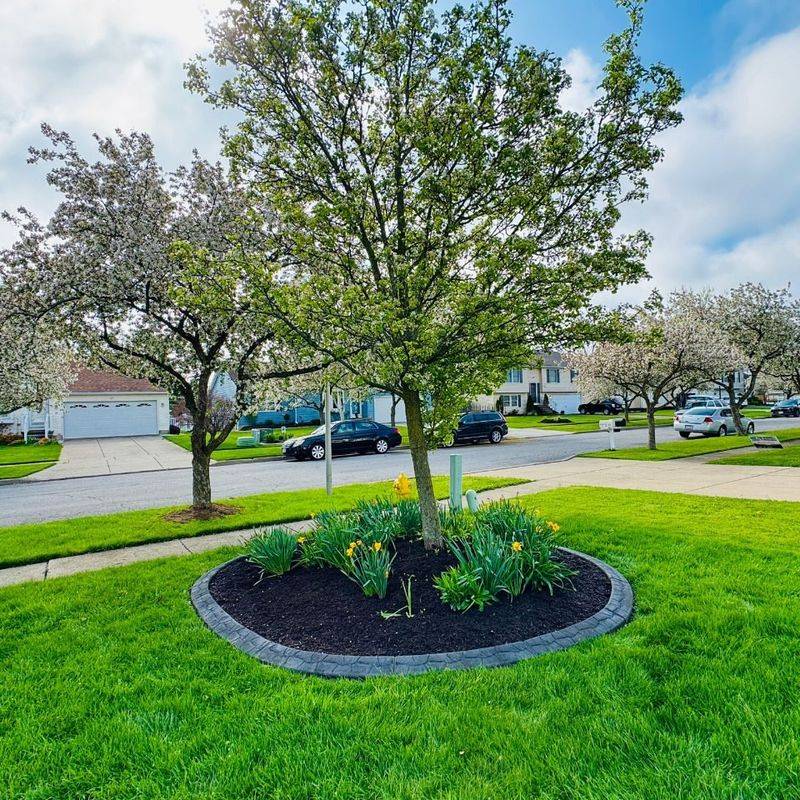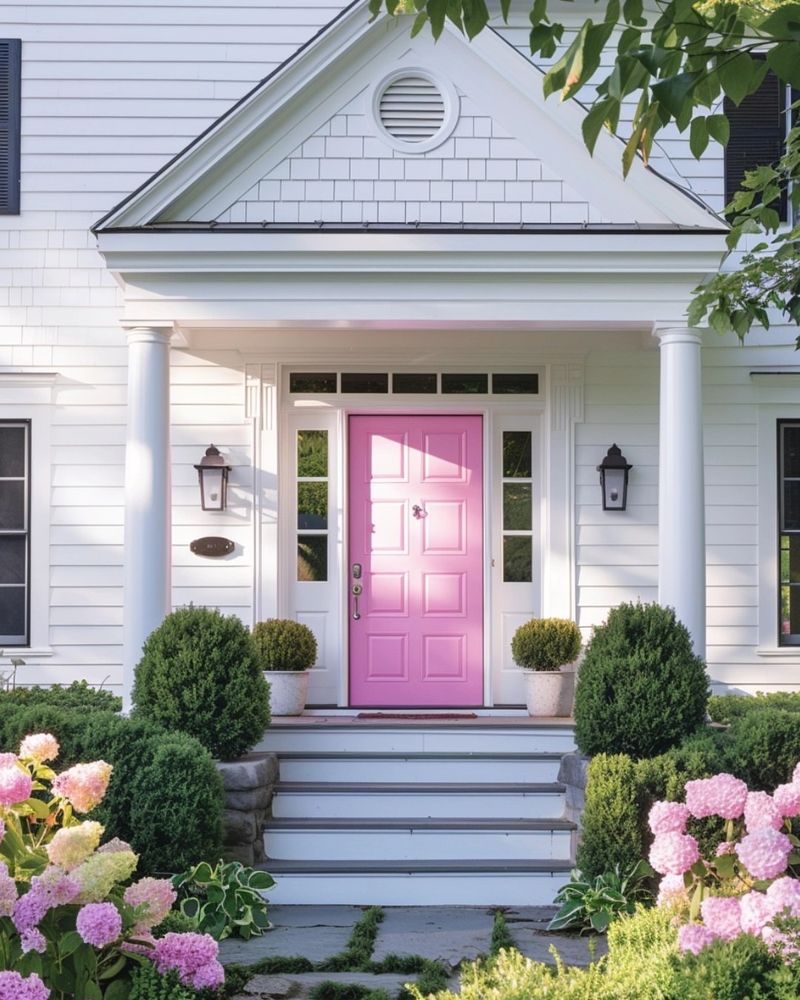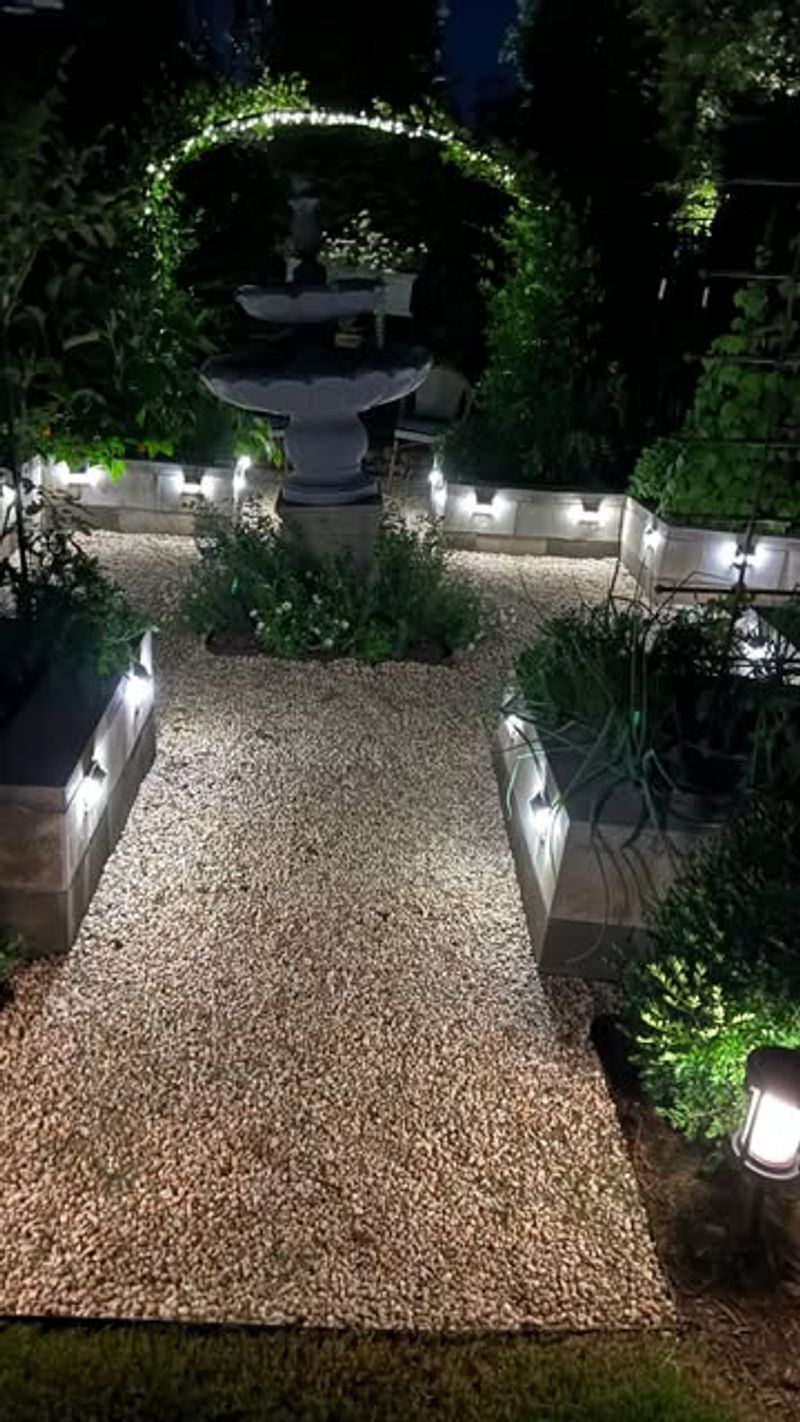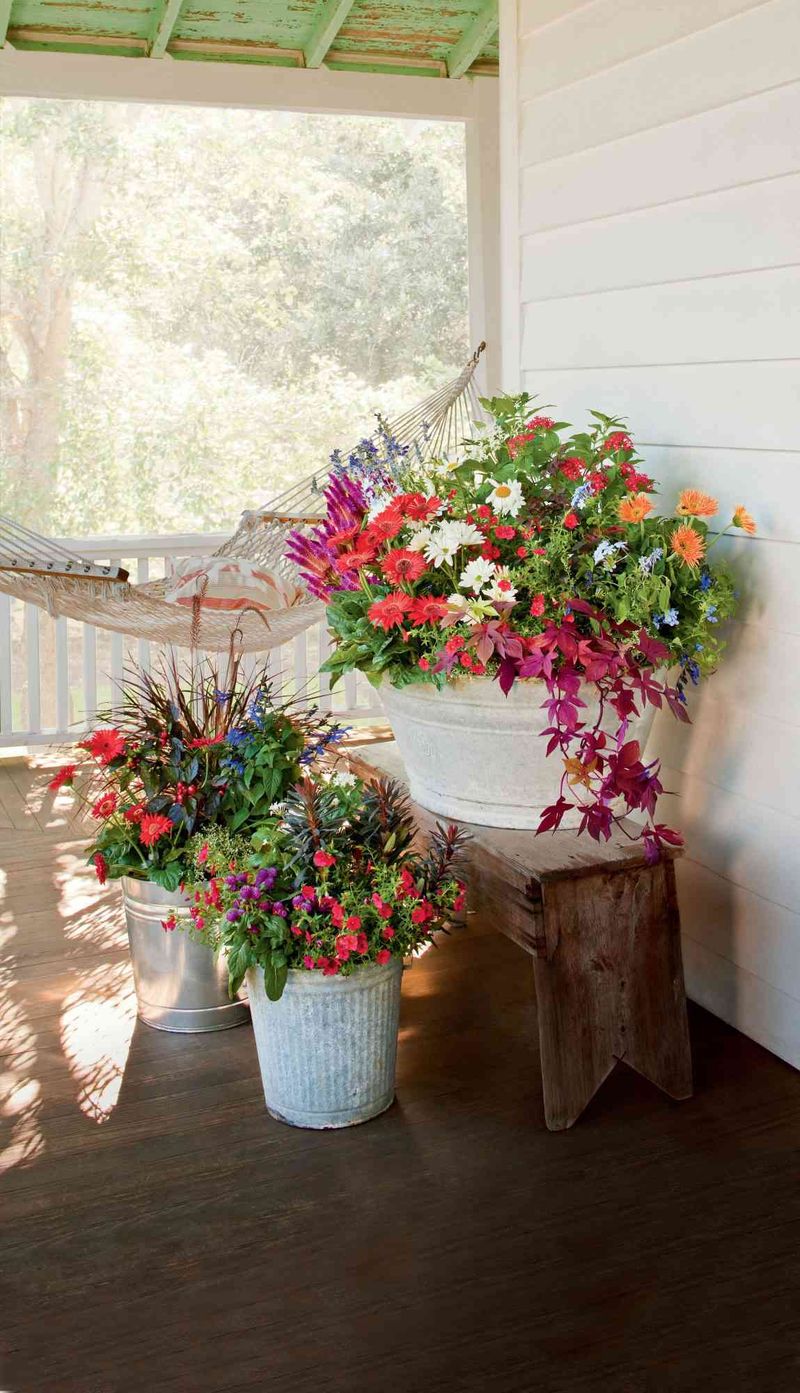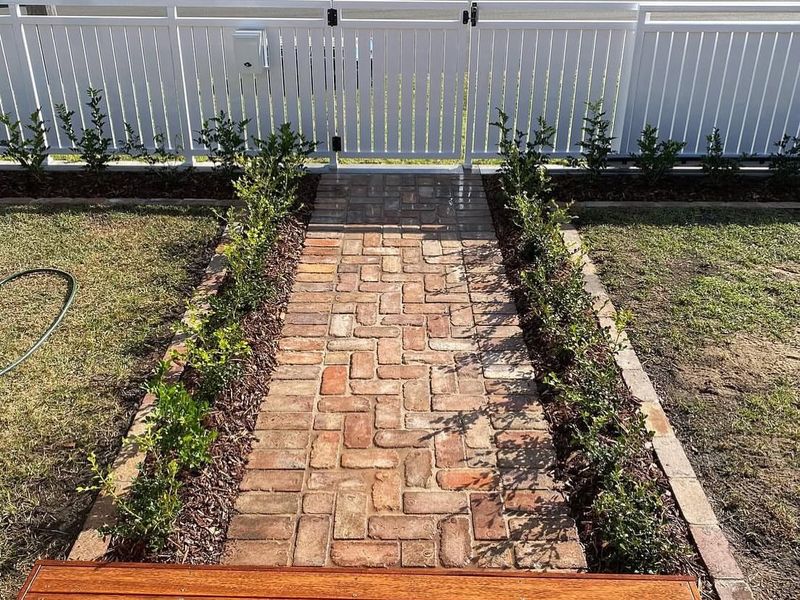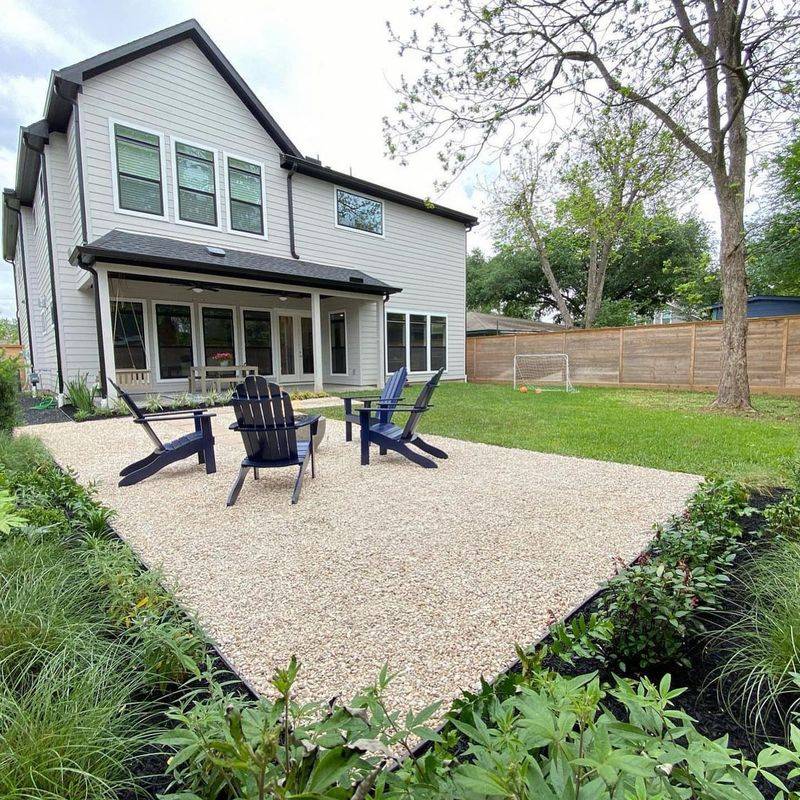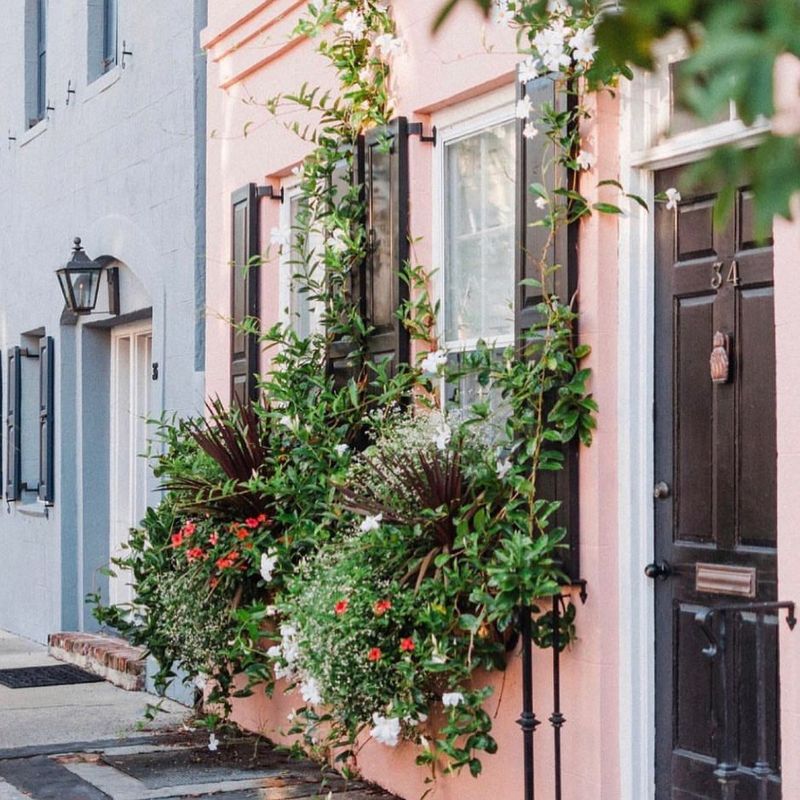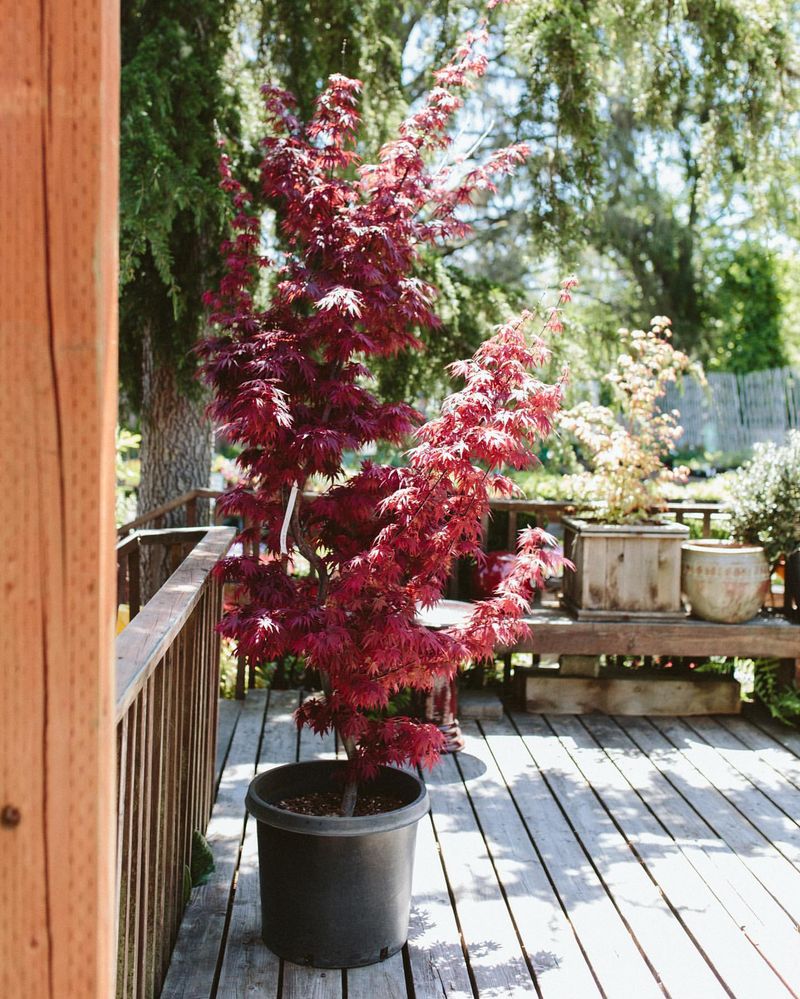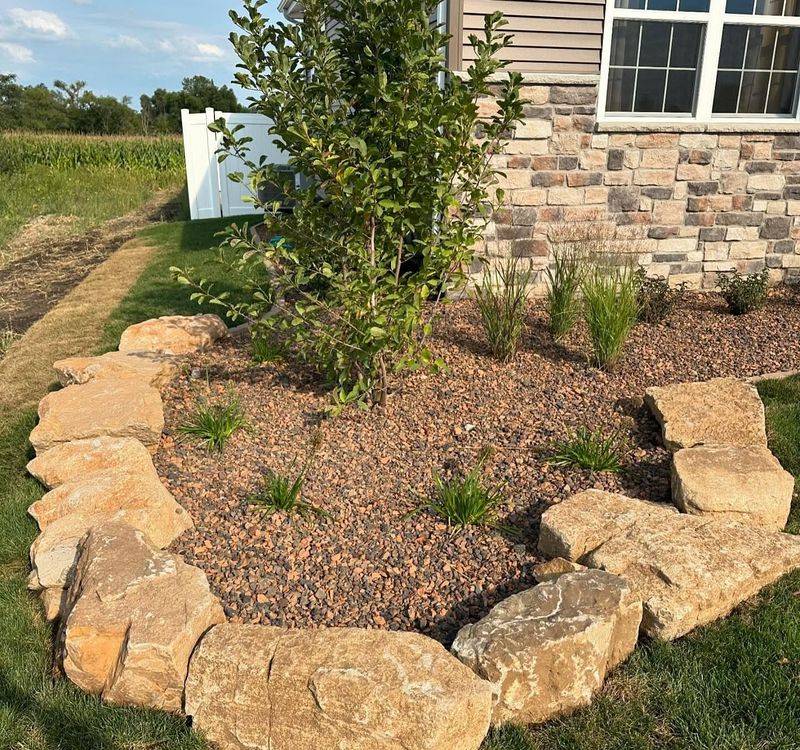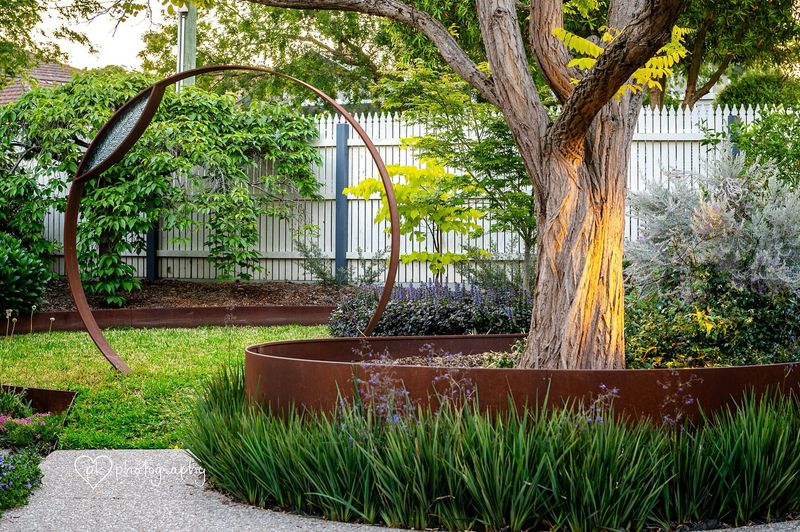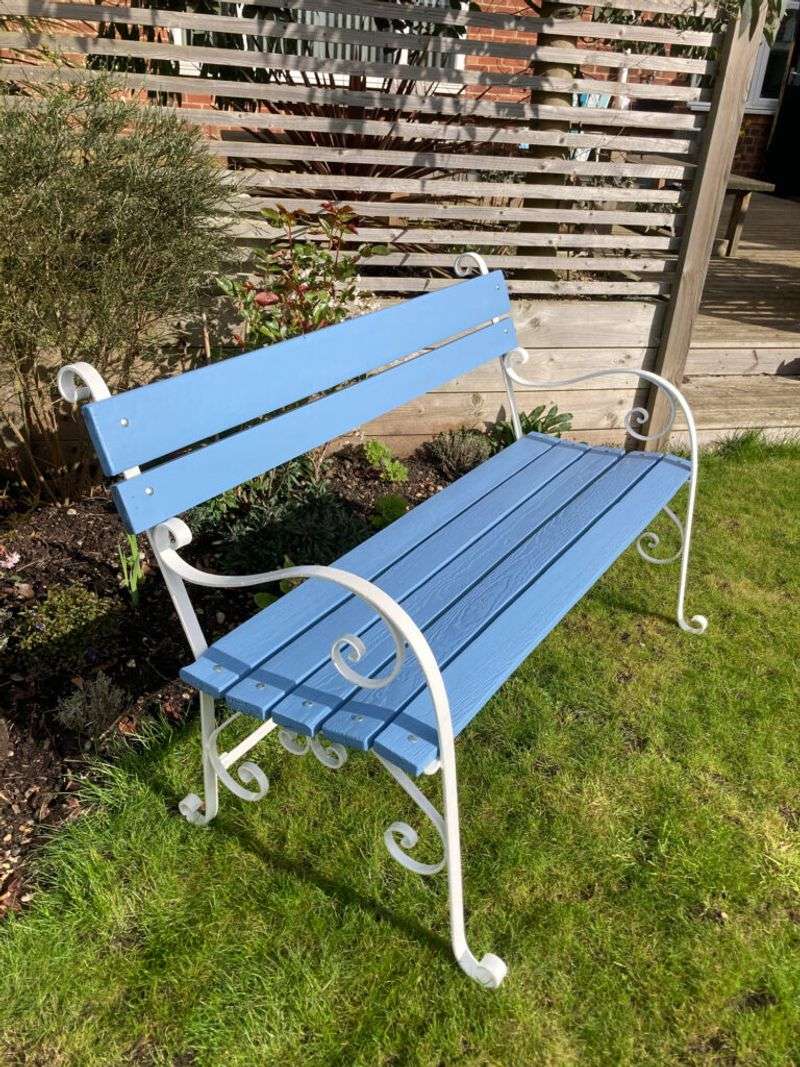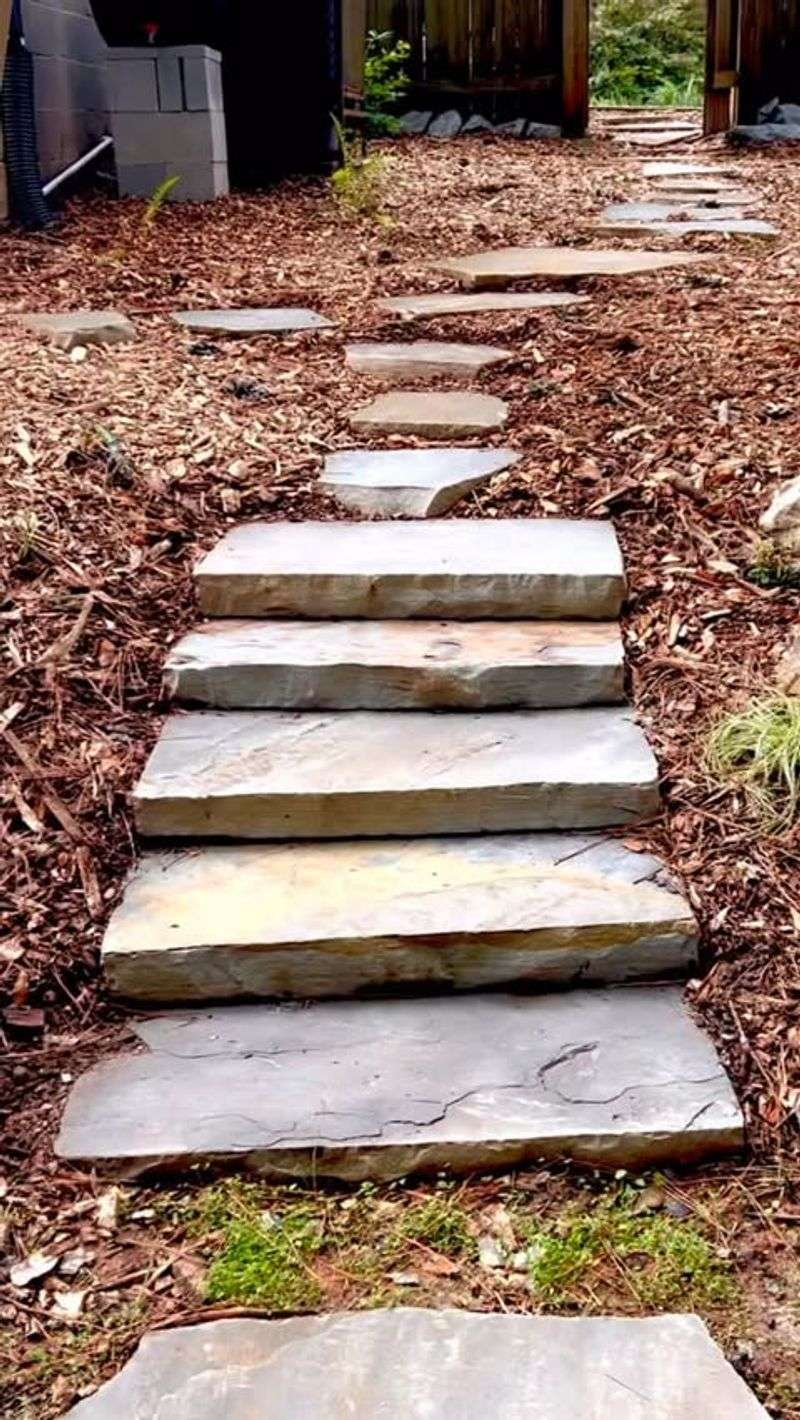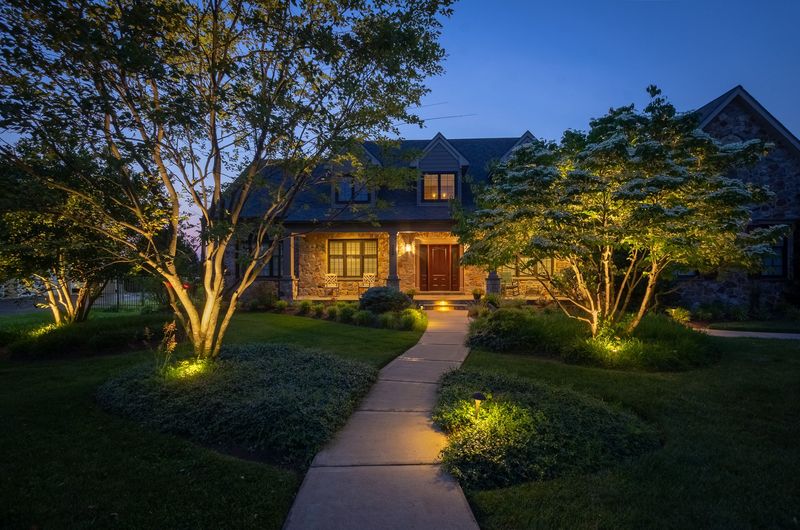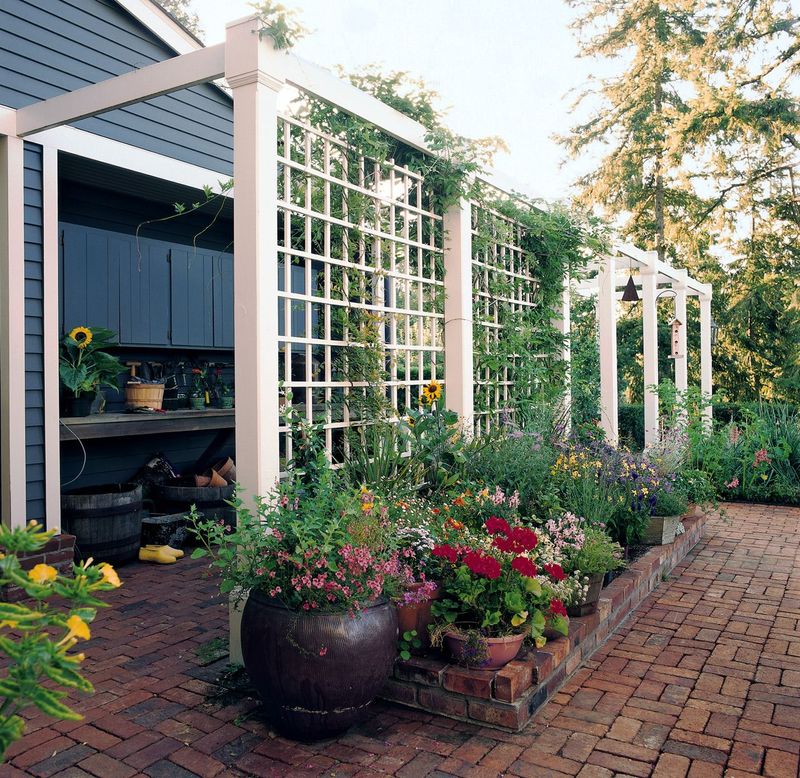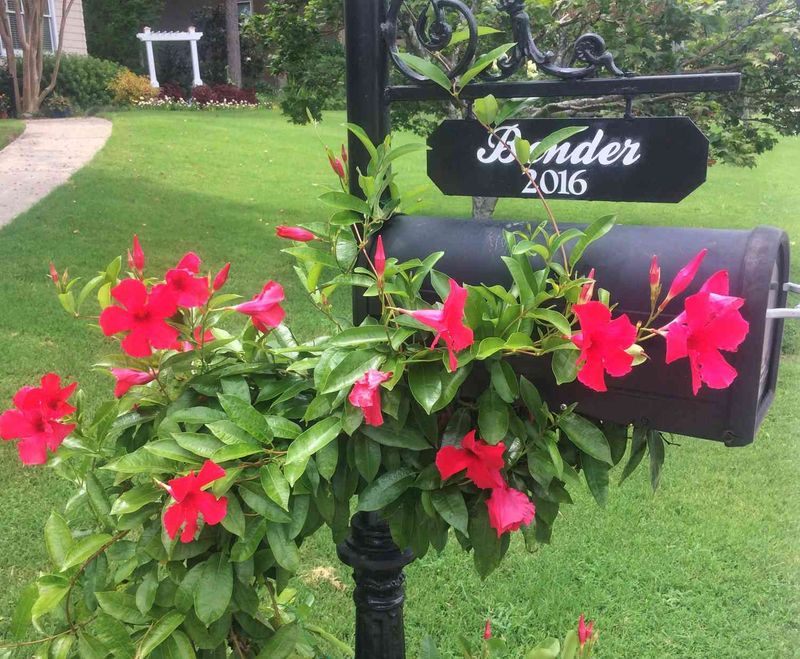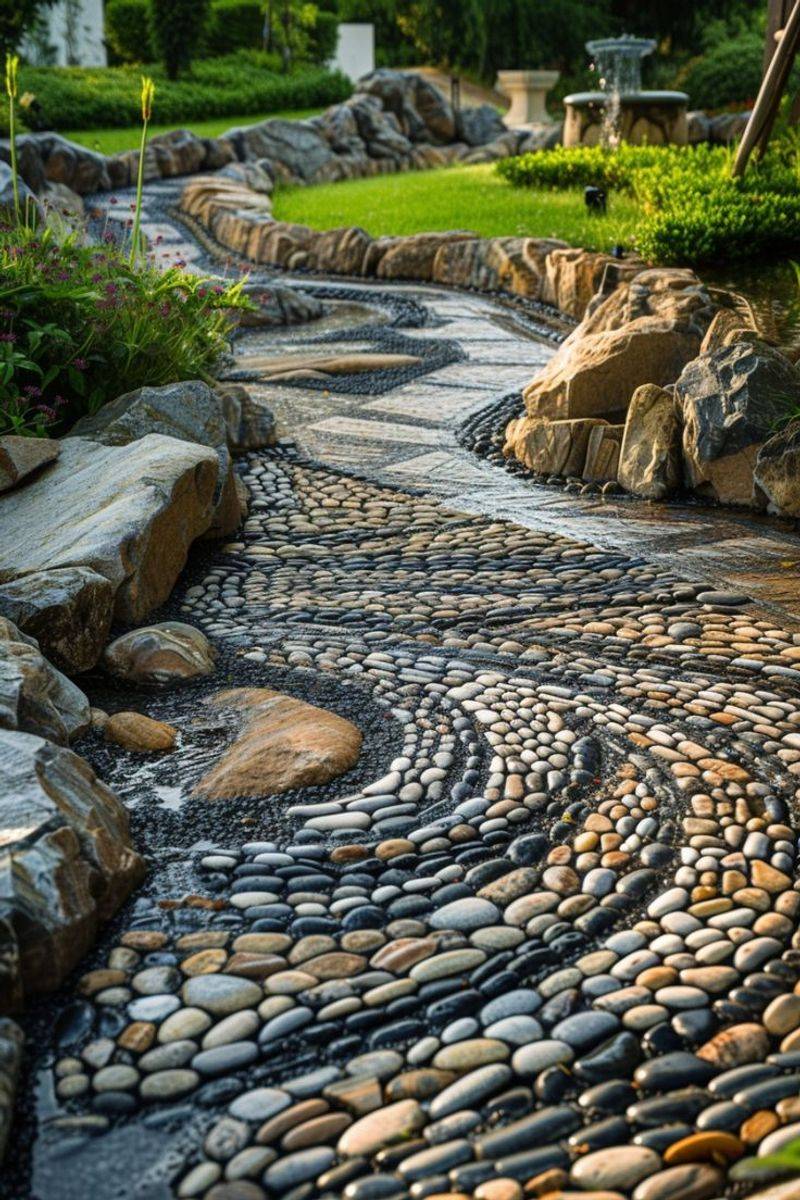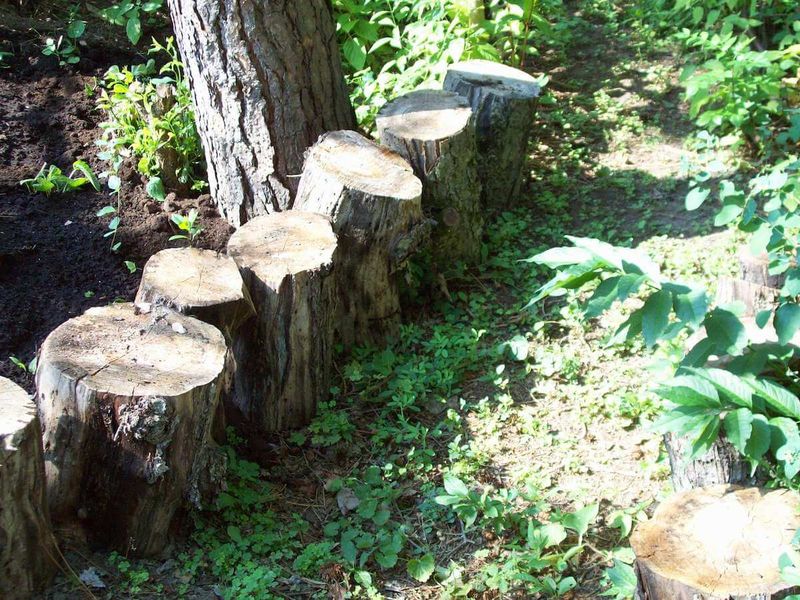Your front yard sets the tone before anyone even walks through the door—and you don’t need pricey makeovers to impress. With a few smart, weekend-friendly projects, you can turn “just okay” into “wow” without stretching your budget.
Add a fresh edge to garden beds, update mulch, and throw in a splash of color with seasonal flowers. Even a bold house number sign or painted planter can create that polished, high-end feel.
These budget-savvy tweaks offer big curb appeal without breaking the bank. It’s all about smart choices and a touch of creativity—making your home the standout of the block.
1. Create A Defined Mulch Border
Fresh mulch instantly refreshes garden beds and creates clean lines against your lawn. The rich color contrasts beautifully with green grass and highlights your existing plants.
When installing, dig a small trench between lawn and beds first, then add landscape fabric underneath to prevent weeds. This extra step saves countless hours of maintenance later.
My neighbors actually asked if I’d hired professionals after I spent just $40 on mulch and an afternoon refreshing my front beds. The transformation was remarkable for such minimal effort.
2. Paint Your Front Door A Bold Color
A freshly painted door acts like a focal point for your entire property. Even when nothing else changes, this simple update makes everything look more intentional and well-maintained.
Consider colors that complement your home’s exterior but provide enough contrast to stand out. Navy blue, forest green, or even a warm red can work wonders depending on your home’s style.
Last spring, I painted my door teal after years of boring beige, and suddenly the whole house seemed more inviting. Several delivery people have mentioned how easy my house is to find now!
3. Install Solar Path Lights
Solar lights require zero electrical work yet transform your walkway after sunset. The gentle illumination guides visitors safely while creating a welcoming atmosphere that’s visible from the street.
Stagger the lights rather than placing them in perfect rows for a more natural look. Most affordable sets charge fully even on cloudy days and will last for years before needing replacement.
We added these along our front walkway last fall, and during the holidays, guests commented on how much more polished our home looked compared to previous years—all from a $30 lighting set.
4. Add Colorful Container Gardens
Container gardens bring instant color to porches, steps, and bare corners without digging a single hole. The elevation creates visual interest, and containers can be moved around as needed.
Group pots in odd numbers (three or five) with varying heights for maximum impact. Choose plants with different textures and complementary colors that suit your home’s light conditions.
After struggling with poor soil in my front yard for years, switching to containers completely changed my gardening success rate. Now I rotate seasonal flowers without the backbreaking work of replanting garden beds.
5. Edge Your Walkway With Brick
Simple brick edging creates definition between your walkway and surrounding landscaping. The structured line draws the eye toward your front door and prevents grass from encroaching onto paths.
Used bricks often cost a fraction of new ones and weather faster for a more established look. Install them at a slight angle in a shallow trench, allowing just their tops to show above ground level.
What surprised me most about this project was how it made my old concrete walkway look intentionally rustic rather than just worn out. The entire front approach suddenly had character instead of looking neglected.
6. Create A Simple Gravel Seating Area
A small gravel patio creates usable outdoor space without the expense of decking or concrete. The informal texture adds character while providing drainage far better than solid surfaces.
Frame the area with pressure-treated timber or leftover bricks before adding landscape fabric and 2-3 inches of gravel. The frame keeps everything contained and creates a finished appearance.
The weekend we finished our gravel seating area became an unexpected neighborhood gathering spot. Something about seeing furniture in the front yard made neighbors stop to chat in a way they never had before.
7. Install Window Boxes
Window boxes add charm and dimension to flat house facades. The splash of greenery softens architectural lines while bringing nature closer to your windows.
Choose boxes slightly narrower than your window width and secure them properly to prevent accidents. Self-watering designs reduce maintenance, making this enhancement practical even for busy homeowners.
For years I thought window boxes were too fussy for my maintenance level, but modern plastic versions with built-in reservoirs changed everything. Now I enjoy flowers outside my office window with watering just once weekly.
8. Plant A Flowering Tree
A single flowering tree creates a focal point that evolves through seasons. Unlike hardscaping projects, trees appreciate in value and impact as they mature.
Small varieties like dogwoods, crabapples, or Japanese maples offer dramatic seasonal interest without overwhelming modest yards. Plant in fall for best establishment with minimal watering needs.
The redbud I planted five years ago cost just $25 as a sapling but now stops traffic when it blooms in spring. That small investment completely transformed how people perceive our property’s value.
9. Create A Natural Stone Border
Collected fieldstones make charming, free borders that add organic texture to garden edges. The irregular shapes and varied colors bring natural character that manufactured products can’t match.
Arrange larger stones first, then fill gaps with smaller ones, partially burying them for stability. This technique prevents the “just placed” look and helps stones stay put during heavy rain.
During family walks, we started collecting interesting rocks and placing them around garden beds. What began as a no-cost activity with the kids evolved into our most complimented landscape feature—visitors always ask about our “professional stonework.”
10. Add A Simple Arbor Entrance
An arbor creates a defined entry point that elevates ordinary walkways into intentional journeys. This vertical element draws the eye upward and creates architectural interest even in winter.
Pre-made vinyl or metal arbors often go on clearance at season’s end. If you’re handy, simple wooden designs can be built from pressure-treated lumber for under $100 using basic tools.
The weekend after installing our arbor, three neighbors stopped to ask about our “renovation plans.” They assumed the simple structure was the first step in a major landscape overhaul, though it was our only planned project!
11. Paint Garden Furniture
Rejuvenating tired outdoor furniture with paint creates colorful focal points throughout your landscape. Weather-beaten pieces transform into design statements with just a can of exterior paint.
Sand lightly first, then apply outdoor-specific paint in thin coats for best adhesion. Bold colors like turquoise, coral, or sunny yellow create cheerful accents visible from the street.
An old wooden bench from a garage sale sat unnoticed on our porch for years until I painted it bright blue. Now it’s the first thing visitors mention and has inspired me to be braver with color throughout our garden.
12. Install A Flagstone Stepping Path
Irregular flagstones create charming pathways that look established and expensive but can be installed in a single afternoon. Their natural variation adds character that uniform pavers can’t match.
Leave small gaps between stones and fill with creeping groundcover or pea gravel. This approach allows for natural settling while preventing the path from becoming muddy after rain.
The stepping stone path to our side yard used to be plain concrete rounds until we upgraded to flagstone. Though the materials cost more than concrete, the instant age and character they added made the investment worthwhile.
13. Create A Rain Garden With Native Plants
Rain gardens solve drainage problems while creating beautiful, low-maintenance plantings. These shallow depressions collect runoff, reducing erosion while supporting wildlife with native species.
Position them at least 10 feet from foundations in areas that already collect water. Native sedges, irises, and cardinal flowers thrive in these conditions with minimal care after establishment.
The boggy corner of our yard frustrated me for years until converting it to a rain garden. Now it’s a butterfly magnet that neighbors compliment instead of a perpetually muddy eyesore.
14. Add Landscape Lighting To Trees
Uplighting transforms ordinary trees into dramatic nighttime features. The soft illumination creates depth and extends your landscape’s impact well after sunset.
Solar spotlights require no wiring and can be repositioned seasonally. Aim them upward through branches for maximum effect, highlighting interesting bark or branch structures.
Friends thought we’d hired professionals when they saw our maple tree illuminated during an evening gathering. The $25 solar spotlight created such dramatic shadows that it completely changed the atmosphere of our entire front yard.
15. Build A Simple Trellis Screen
Trellises create instant vertical interest while screening unsightly areas like utility boxes or air conditioners. The open framework softens views without blocking air circulation.
Construct basic frames from pressure-treated 2x2s in a grid pattern, then secure to posts driven into the ground. Fast-growing annual vines provide coverage within weeks of planting.
Our neighbor’s reaction to the trellis hiding our trash cans was priceless—she asked if we’d had “professional landscapers” in. The project cost under $30 and took just one Saturday morning to complete.
16. Add A Decorative Mailbox Garden
The mailbox area creates a first impression before visitors even reach your home. A small garden surrounding this utilitarian feature welcomes guests and mail carriers alike.
Choose low-growing, drought-tolerant plants that won’t obstruct access or visibility. Sedums, dwarf ornamental grasses, and spreading perennials create year-round structure with minimal upkeep.
Our mail carrier actually left a thank-you note after we planted our mailbox garden. She wrote that it brightened her route and made finding our house easier—an unexpected benefit beyond the visual improvement.
17. Create A Pebble Mosaic Stepping Stone
Handmade stepping stones add personal character to garden paths at minimal cost. The contrast of smooth pebbles against concrete creates visual interest even in dormant winter gardens.
Use a plastic plant saucer as a mold and arrange pebbles in simple patterns before pouring quick-set concrete. Children especially enjoy helping with this project, creating family keepsakes that enhance your landscape.
The stepping stones my kids made five years ago have weathered beautifully and still prompt questions from visitors. These personal touches make our garden distinctly ours in a way purchased accessories never could.
18. Add A Rustic Branch Border
Fallen branches repurposed as garden edging create woodland charm for absolutely free. The natural materials blend perfectly with plants while providing clear boundaries between beds and lawns.
Select branches of similar diameter and cut to manageable lengths. Install by pressing them partially into the soil, creating a woven effect where they overlap at corners.
After a windstorm left branches scattered across our property, I used them to edge our front perennial bed rather than hauling them away. Visitors frequently ask where I purchased the “rustic edging”—they’re always surprised to learn it was free.

